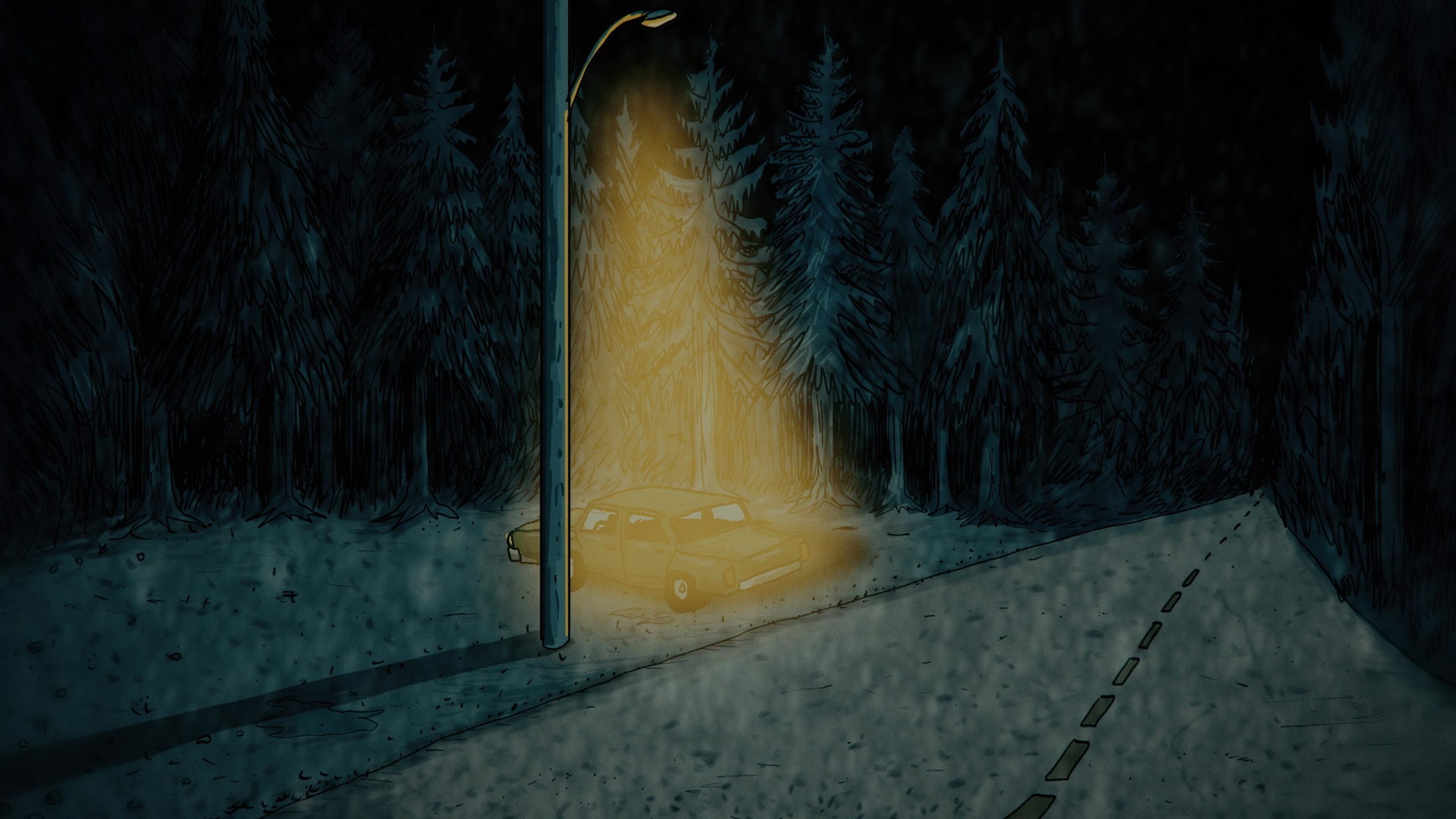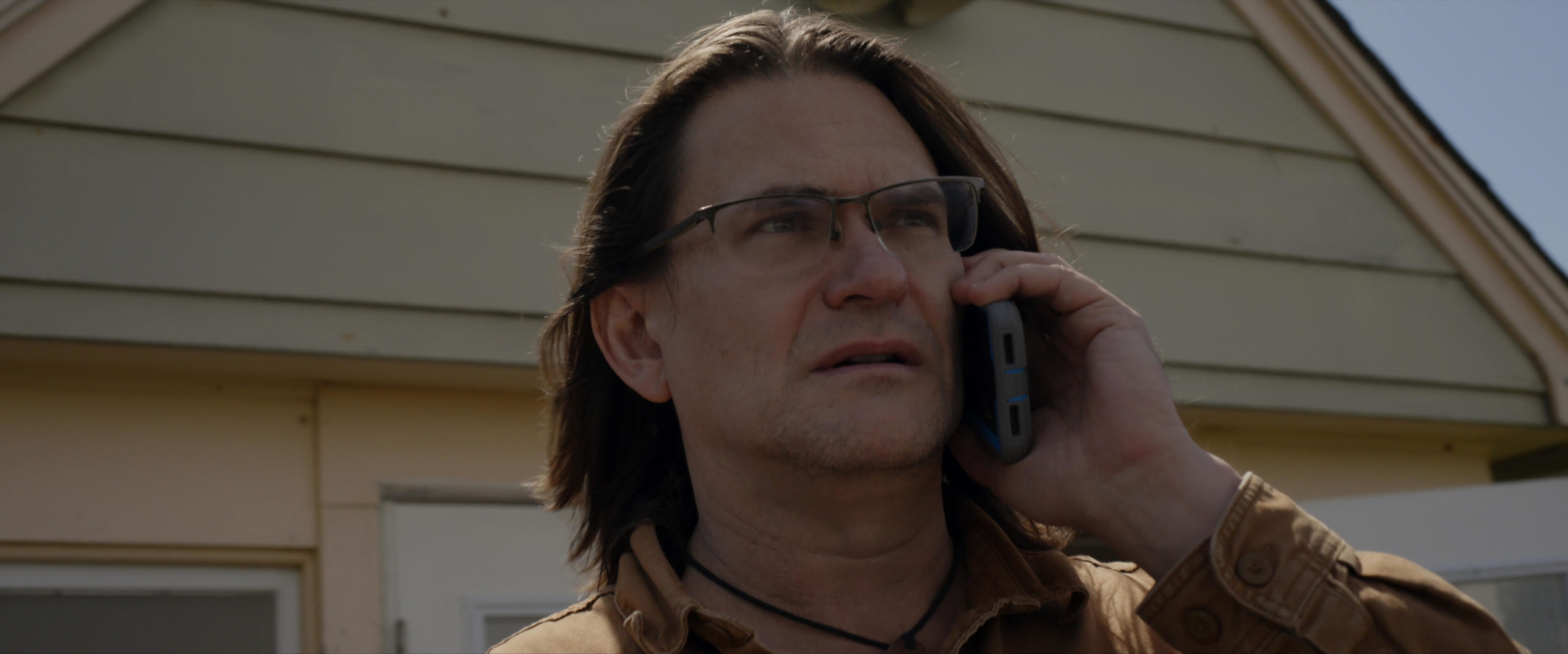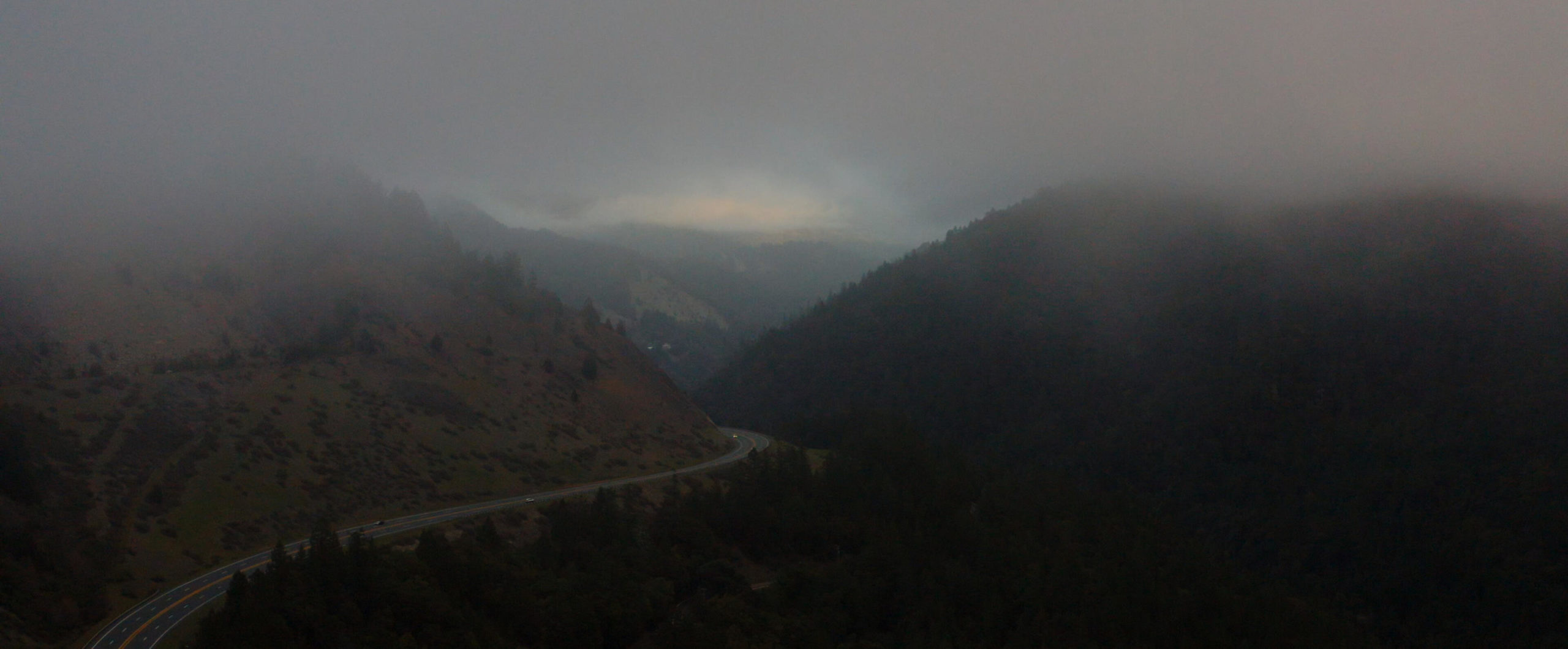Filmmaker Joshua Rofé’s previous project, Lorena, offered an in-depth look at a true-crime story that grabbed headlines worldwide. His latest, Sasquatch, investigates a far more enigmatic case, though — as the title suggests — it does revolve around an American icon who’s both famous and famously elusive.
Sasquatch begins with a wild story from journalist David Holthouse: while visiting a pot farm in 1993, he heard about a vicious triple murder allegedly committed by… Bigfoot. From there, the three-part documentary follows Holthouse as he digs into the past and some very inhospitable Northern California forests, trying to uncover the truth about what really happened. Gizmodo spoke to Rofé after the series had its premiere at 2021 South by Southwest; it arrives on Hulu on the weediest of days, April 20.
Cheryl Eddy, Gizmodo: The series is called Sasquatch, but really it’s about so much more than just the Bigfoot story that sets everything in motion. Why did you decide to give it that title?
Joshua Rofé: That’s just where it started. That was the entry point for us with this story, and at the same time, it was the entry point for the investigation itself and the different paths that it led us down. Without looking into this Sasquatch murder mystery, we would have never arrived where we did in these other aspects of the story that arose from the digging.

Gizmodo: How did you connect with David Holthouse and what was the process like in deciding to make this series?
Rofé: Can I take it back even a step further? I’ll just tell you how this started, very specifically. February 2018 I was having dinner with a friend whose name is Zach Cregger — he’s one of the EPs on this show — and his parting words to me that night were, “Oh by the way you should check out this podcast that I’ve been listening to. You’re either going to love it or think I’m crazy for loving it. It’s called Sasquatch Chronicles.” I immediately thought, “Oh, you’re crazy. I have no interest.” And he said, “Just listen to one episode and you never have to hear another word from me again about it if you don’t like it.” What Sasquatch Chronicles is, it’s people calling in with their encounter stories. So I listened to my first episode the next day, and I loved it. Cut to four days later, and I’d listened to 11 episodes.
I was not really hung up on whether or not I believed the details of the stories; that was almost beside the point to me, because I had become almost overwhelmed by the fear that was the throughline amongst all of these people telling their stories. They were terrified in a way that I thought was authentic, and I thought that was fascinating — specifically as a person who, going into this, was in no way a Sasquatch believer. The visceral fear that they were expressing really hit a nerve with me. So I spent a few days, maybe a week, just sort of in my own mind doing this dance of “I think I want to make something that is Sasquatch-centric. I don’t know if it’s a doc, scripted, or what. Then an hour later I would say, “I can’t do that! That sounds ridiculous!” But then I got to this point where it was just clear to me that I wanted to find some kind of a story that was set in the world of Sasquatch, if you will.

David Holthouse is somebody that I’d known for a few years and we were working together at that specific moment on a series that I was making called Lorena. He was my lead researcher and I knew David’s history — I knew that he’d been an investigative journalist for 25 years and a gonzo journalist for many years even on top of that. He’d seen and done a lot of crazy things in the name of chasing a story, and he’s just that person you know that if you’re looking for a crazy story, you’d reach out to him.
So one night, I sent him a text and just said, “Hey, this is the craziest text I’ll send you for the next five years: I would like to find a murder mystery that is somehow wrapped up in a Sasquatch story, and if it’s reasonably possible, pursue it as my next project.” He writes right back, he said “I love it, I got one, I’ll call you in five.” And then he proceeds to tell me the story of what happened to him in 1993 [that unfolds in Sasquatch], of [visiting a cannabis farm] in Northern California and [overhearing the story of] three guys who were murdered, torn limb from limb, and every eyewitness had the same account: that it was committed by a Sasquatch. That’s the story he told me, and immediately I was in.
It was interesting with David because, you know, it would be inaccurate to say he was haunted by it all of those years. But it was a story that — similar to how I almost was embarrassed to concede to myself that I wanted to pursue a Sasquatch story — was too weird to share with people or to pursue as a journalist, in his mind. As a documentarian, most of my things that I’ve done are really rooted in social issues, and now I’m going to go do a Sasquatch story? He had a similar thing as a journalist. Everything that he’d written about had very true and severe real-world implications for those involved. This was just that thing that you don’t tell people because it was too silly.

Gizmodo: The film digs into the dark and violent history of the marijuana-growing industry in the “Emerald Triangle” of Northern California. What was the most surprising thing you learned about that history while you were making the film?
Rofé: I had no idea about the history of the Indigenous people up there, the Wiyot tribe specifically, and the way they were — in true American fashion — slaughtered, terrorised, and colonised by these white settlers. So learning about the history of trauma and racism that existed up there was definitely not something that was on my agenda with the pursuit of this Sasquatch murder mystery. Then all the way to the ‘80s and the War on Drugs operation that was occurring up there. Again, same thing, the local people were being terrorised in this place that was once peaceful in the ‘60s and ‘70s was now becoming quite literally a war zone. People who were not built for war left, and their time as “back to the landers” came to an end.
But there was another type of person who was living up there, and those were people who were built for war, and they weren’t going anywhere. So what happened was they retreated even deeper into the forest, and as one of the people on the show says, some of them became feral. So you have this community up there that was really ruled by paranoia and a lot of times violence. In my perception as a true outsider, it was a beautiful, picturesque place — I never had that even in the back of my mind as a potential history for the place, let alone that even today there’s a really specific, intense, and sometimes brutal culture that rules the day up there.
Gizmodo: Instead of starting from a crime, like many true-crime series do, Sasquatch starts with a memory of a crime which may or may not have happened. What were the challenges involved in building a film around that starting point?
Rofé: We knew from the beginning that, in a way, we were pursuing a ghost story. We were pursuing a memory that David had, and a memory that was at times fuzzy and in other moments crystal clear. He was unsure when he was starting to embark on this if he was misremembering certain details. My series that I made before this, Lorena, was the story of Lorena Bobbitt, and there was so much material. That was a real-life event; there are police reports, there’s archival footage from resources around the world, there are court transcripts, there are all of these people — we interviewed 50 people for that — who can speak to their part in that story, what they experienced.

Before I even heard the Sasquatch story or was thinking about anything Sasquatch, I did have this thought of, “What would it be like to make a documentary about a subject that you can’t even Google?”, where there’s nothing. I ended up basically falling in love with this, and I got the answer: it’s really hard! You have to be relentless in your pursuit of information, but in a way that requires a level of patience that even I — a person who has to be patient because the process of my stuff is so slow — had to learn a new level of patience.
It wasn’t going to be like the other docs I’ve made, where, if I go on the road for a week, I can come back with 12 interviews, each one is three hours long, and we have a ton of information and moments and connective tissue to work with. This one, you’d go on the road for a week and maybe you came back with five different moments that didn’t even seem connected to each other. You felt like you were screwed. I had moments where I wondered if was going to have to call Hulu and say, “I don’t think we can do this. I don’t know.”
But you keep going, and you keep going, and then months pass, and you get another three moments that suddenly make three of those five moments you got two months earlier really come alive, and now they have context. It’s a jigsaw puzzle with truly tiny pieces and a lot of missing pieces, some of which will remain missing forever and we knew that, you know? You just had to be patient, and you had to keep going. It was clear to us when we had gotten to the end, and along the way, it became this thing that we never set out to do. The Sasquatch murder mystery, that’s the entry point. But the world that you then step into, and the history of this place, and the dark side of humanity that gets explored, and the sort of road map to how you got there with these very real events that have been occurring for hundreds of years in this place — that’s the meat and potatoes of this thing.

Gizmodo: How did you work to balance the tone between the sort of goofy Bigfoot stuff and the serious, scary, murder-y stuff?
Rofé: The quirkier side of this is really where it begins. David started his investigation looking into the world of Bigfoot believers. He figured that there’s gotta be somebody in that world who’s heard this legend of a Sasquatch murdering people. So that was where he started, and our story starts there in this place that is more open to something perhaps supernatural, something a bit quirkier — but the turns that it takes even via the Sasquatch believers, it just keeps getting darker and darker.
Gizmodo: One of my favourite parts of Sasquatch is when you edit one of the guys involved in filming the most famous Bigfoot film ever — the 1967 Patterson-Gimlin film — against the guy who claims he was wearing the suit in that film. How did those interviews come together?
Rofé: Honestly, I mean — you know how when you’re writing a piece, you reach out to somebody who’s part of a story you’re aware of, and then you do a little bit of digging and then you find out there’s somebody else who goes, “Oh, I have a different take on that story”? It really was just that — sitting down with them and trying to treat them both with the same amount of dignity and respect to tell us their version of the events. I think when you juxtapose the two of those, obviously a really interesting dynamic starts to develop and you can almost imagine, “Was this the vibe back in the day when you were young men? Bickering?” But I guess I’m kind of being careful here because I don’t want to give away too much on the spoiler side with those guys.

Gizmodo: You said already that you’re not a Bigfoot believer, but what do you think it is about Bigfoot that is so fascinating to so many people?
Rofé: There’s a sort of boogeyman aspect to Bigfoot, you know? I think we all, going back to when we were kids, we were all scared of the boogeyman, whatever our version of that was. We’re fascinated by what we’re afraid of.
I think there’s an interesting thing that happens when you just go into the woods and your phone doesn’t have any service, and you can’t hear any cars, and there are no technological distractions. It’s just nature and if you stay in just nature long enough, you start to experience it in a different way. Whether you’re on mushrooms or not [laughs], you know, the woods take on a different feel if you spend enough time there and you’re deep enough into them. There’s something inherently cinematic about that. So I think that’s where the fascination comes from.
For me personally, it went back to hearing those peoples’ stories and they were afraid, and I wanted to know what they were afraid of. Then when David told me the story that he’d heard in 1993, and he said those guys were traumatized, clearly out of their minds with fear, it was just a thing of like, what were they so afraid of? We gotta try and find the origin of this story. No matter what happens, it should be interesting.
All three parts of Sasquatch premiere April 21 on Hulu in the U.S. Stay tuned for where it’ll air in Australia.
